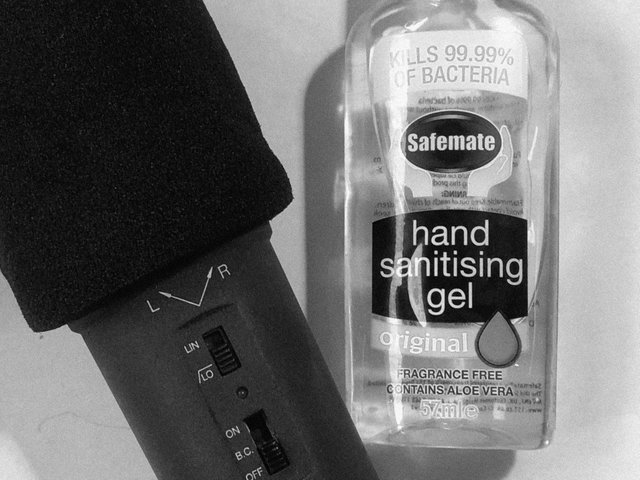
I’m working with Ramadan Radio in Leicester, and we are putting together our planning for the Ramadan FM broadcasts in a few weeks time. I’ve started to write-up a risk assessment for Community Radio Stations for studio work given the advice about the coronavirus. I’ve not seen anything similar yet, but if anyone has any pointers, tips or advice, and are happy to update me, I’ll incorporate them into the document.
There are some common-sense tips that I’ve adapted, which might be useful to share with your presenters and volunteers.
Please feel free to adapt it and pass it to colleagues and other stations.
From microphones just inches from a host’s mouth, to studio boards touched by many, there’s lots of potential ways to transfer a virus. What can stations do?
- Gloves Aren’t Just for Hospitals. They don’t prevent you from doing your job and they generally work with touchscreens.
- Bring your own headphones. Each person should wear their own headphones and not share them. They should also be wiped with an antiseptic cloth, or a damp soapy cloth. Dispose of the cloth after cleaning the headphones.
- Don’t touch the mic. Even in the healthiest of times, engineers say touching the microphone is a bad move. Don’t touch the mic, leave it where it is.
- Get a mic muff for each employee. The cost may be £20 per muff for standard mics, but the muff doesn’t need to be the exact model for the mic that’s in the studio. If in doubt use a clean sock that you can carry with you for your own use.
- Make sure there’s hand sanitizer in the studio, even if it means bringing your own.
- Wipe it down. While disinfecting wipes have suddenly become tough to find they are worth using. Wipe down the audio console, mic arms, headphone jack areas – the things you are going to touch – like the knobs and keyboards. If a sanitiser cloth isn’t available, use warm soapy water to dampen a paper cloth, then once you have wiped the surface dispose of it straight away. Special attention should be the headphone and speaker volume controls, as they are touched more than anything else in the room. Telephones should be wiped down regularly. Make sure that keyboards and mice are cleaned thoroughly.
- Don’t spray the touchscreen. Don’t use cleaning or disinfecting sprays on any studio equipment that has slots in them, such as an audio console with faders that move up and down. Instead, use a wipe so that stray fluid does not enter through the gaps in the console and damage the electronics. Alcohol-based wipes are fine for any surface that’s in a modern studio.
- If you’re sick, stay home. In an effort to slow the spread of the coronavirus, experts are urging people who are not feeling well to self-quarantine as the only effective way to keep the coronavirus epidemic at bay.
- Take work home instead. A lot of presenters do their voice-tracking at the studio, but a lot of this can now be done at home. Find out what you need to purchase. Get a decent microphone or headset, a USB converter into your laptop.
- Practice good cough and sneeze etiquette. Cover your mouth when you cough, or sneeze. In a confined space like a radio studio that may be even more important. Place tissues in every room, in the studios, offices, lounges – and a rubbish bin.
- Don’t touch your face.
- When the on-air shift is over, wash your hands.
Ramadan-Radio-CV-19-Risk-Assessement-001-2020-03-17
Posted from my blog with SteemPress : https://decentered.co.uk/twelve-tips-for-creating-a-safer-radio-studio/
Hi! I am a robot. I just upvoted you! I found similar content that readers might be interested in:
http://www.insideradio.com/free/tips-for-creating-a-safer-radio-studio-in-a-coronavirus/article_5d948476-6503-11ea-8b4e-5f577a0bce6d.html
Downvoting a post can decrease pending rewards and make it less visible. Common reasons:
Submit